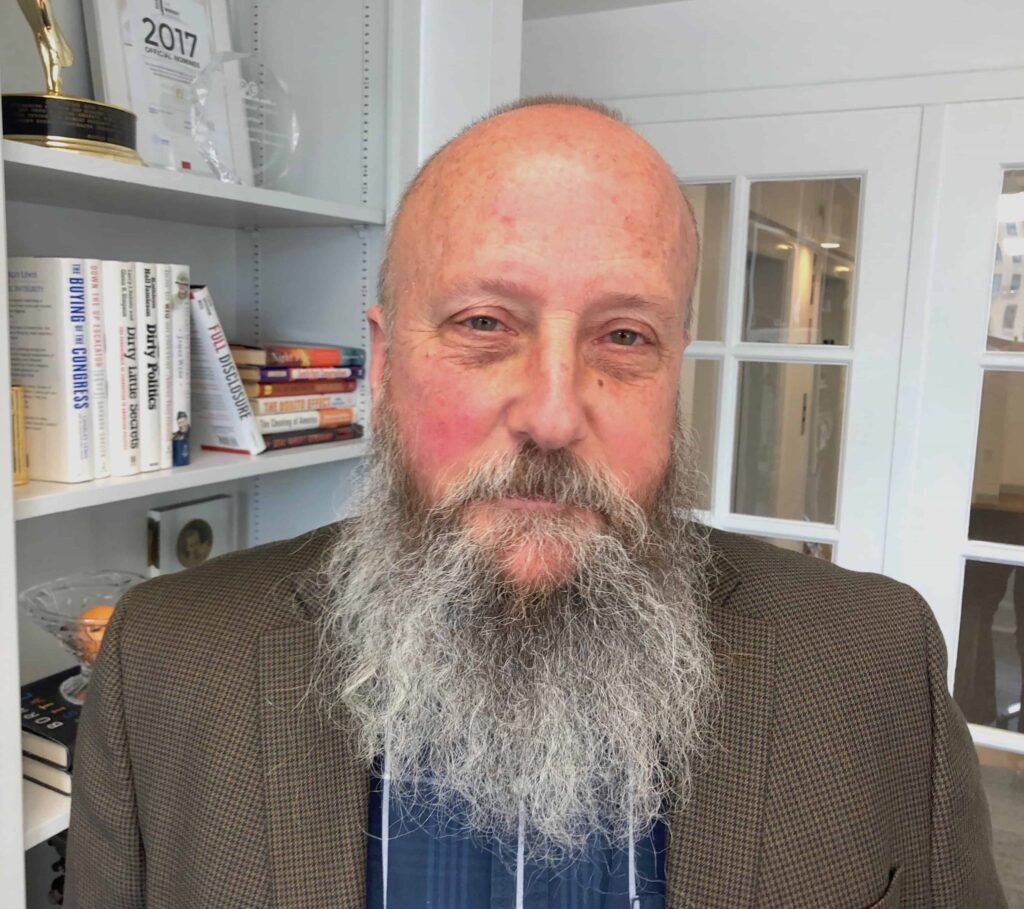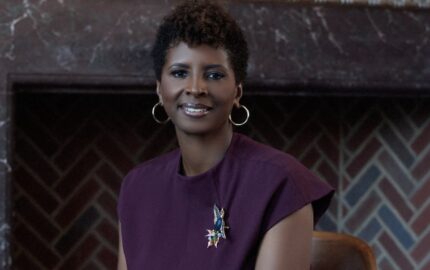Jim Morris was four decades into a successful investigative journalism career spotlighting environmental and labor issues. His storytelling — in newspapers, magazines and broadcast — was intimate and girded with data. He had more than 80 awards to his name, including the George Polk, the Sidney Hillman and two Edward R. Murrows. He helped edit a Pulitzer winner.
But he was feeling restless.
He began to think about starting a nonprofit news operation, one that focused exclusively on weaknesses and injustices in the nation’s public health infrastructure, exposing inequities and highlighting solutions. He met with advisors and was in discussions with a major university about his idea when the pandemic struck.

Morris worked as a senior reporter, project manager, managing and, in 2019, acting executive director of the Center for Public Integrity, the D.C. based non-profit started by former “60 Minutes” producer Charles Lewis. The organization’s mission was to “expos[e] abuses of power by government and corporate interests.” As part of that, in 2010 Morris built a team to cover environmental issues and workers’ rights. It soon became a self-sustaining, Pulitzer-winning unit known for its investigations into toxic air pollution, unsafe workplaces and industry influence on science.
Former CPI reporter, Kristen Lombardi, who worked closely with Morris, described his “knack” for finding stories that fit the mission, and filled a vacuum in labor reporting. Morris’s abiding concern for social justice, especially for workers, she said, is because “they’re forgotten as a population,” yet suffer harms “in so many different ways, at so many different levels.”
Part poet, part guardian, Morris’ stories turned statistics into people, as he did with a 2017 profile of Jim Spencer, a Nebraska plumber who died in a trench cave-in at a construction site. The 4,900-word story demonstrated the broad social costs of preventable tragedies:
When a worker dies of traumatic injury, gloom spreads like a webbed crack on an ice-covered pond, reaching far beyond the immediate family to touch former colleagues, lifelong friends and – in Jim Spencer’s case – waitresses, convenience-store clerks and other strangers he routinely engaged in conversation in this western Nebraska railroad town of 9,000 people.
But if conveying humanity is the means for Morris, accountability is the end. When “Carbon Wars,” which Morris led and edited, won the 2017 Society of Environmental Journalists’ prize for explanatory reporting, judges praised the series for “gripping… storytelling throughout,” calling it “an alluring mix of analytical and deeply human; reporters push[ed] the conversation forward, offering new thoroughly reported examples of regulatory weaknesses and cases of damaging pollution.”
The story about Spencer, the Nebraska plumber, spurred a change in state law, and gave families of accident victims access to law enforcement information they’d been denied. Another project that Morris edited, “Breathless and Burdened,” exposed how miners with black lung disease were denied benefits; it won the 2014 Pulitzer Prize in investigative reporting and led to significant policy changes within the Department of Labor.
The Pivot
Journalists talk about surviving career disruption and chasing dreams. Find out what happened to Chris Jones, former senior writer for Esquire, how a young journalist was cut out of newsrooms then found her way back, and why a top editor at Linked In left to start a podcast,
Yet Morris sensed his vision and CPI’s were beginning to diverge. “I wanted to keep doing in-depth public health journalism and felt I was ready to run my own organization,” he told Nieman Storyboard.
I’ve always been attracted to complicated stories that many other journalists won’t touch because of the time commitment and storytelling challenges involved.
—Jim Morris
Despite setbacks brought on by COVID, Morris forged ahead. Public Health Watch went live in August 2021 with a promise to “inform, inspire and, when necessary, enrage, leading to impact in its many forms.” The site’s longform print and radio stories emphasize accountability, expose injustices, and aim to “press elected officials, regulators and corporate executives to explain why [for example] people who live within a few miles of an oil refinery or a petrochemical plant — most often, people of color — are still forced to breathe poisons known to cause cancer and other maladies.”
Morris told Storyboard about the why and how of his late-career pivot.
What was your biggest challenge in making the leap from a known news organization to a start-up?
Starting a nonprofit news site during a pandemic might seem ill-advised, and it certainly presented challenges. No face-to-face meetings with prospective funders, and people’s personal lives in varying degrees of upheaval. Fortunately, I didn’t listen. Given that the topic would be public health, I felt it was exactly the right time to launch.
Oddly, it worked in our favor. If people didn’t understand how important public health was before COVID-19 appeared, they certainly did after. Our message was that America’s public health infrastructure was in bad shape before the pandemic took off two years ago, and then got even worse. We reminded people that non-communicable diseases such as cancer and diabetes are responsible for seven in 10 deaths in this country. That will still be the case when the current crisis fades. The message seemed to sink in. We got our first significant foundation grant in the fall of 2020. I saw this as an endorsement of the idea. Other grants followed in the winter and spring of 2021, and I made the decision to launch.
What surprised you most, and what have you learned from it?
I was pleasantly surprised that eight foundations and several individuals were willing to take a chance on a journalism start-up at an extremely fraught time. I was also gratified by the high-quality writers, editors and advisory board members we were able to attract.
Who or what helped you most during the transition?
Our outstanding advisory board — a mix of journalists, academics and public health professionals — and our enthusiastic team of contributing editors and writers, only one of whom I knew well when we started out.
I leaned heavily on people like Chuck Lewis, founder of CPI., for whom I never worked but with whom I became friends, and Mike Kanin, then publisher of the Texas Observer. Its parent, the Texas Democracy Foundation, became the fiscal sponsor of Public Health Watch. I talked to other leaders of news nonprofits as well as foundation officials and journalists with whom I’d collaborated over the years. Most were encouraging.
And, frankly, basing Public Health Watch in my home state of Texas, which ranks at or near the bottom among the states by almost every public health measure. The need here is acute for investigative reporting on topics such as environmental health, occupational health and safety, and women’s and children’s health.
What elements of your journalistic craft/values have you been able to hold onto, and which did you find you could let go of?
Public Health Watch is a product of my 44 years in journalism. Its mission aligns with my belief that journalism should be original, compelling and fact-based. I’ve always been attracted to complicated stories that many other journalists won’t touch because of the time commitment and storytelling challenges involved. Those are the kinds of stories we’ve done, and will keep doing, at Public Health Watch. Sometimes it can be hard to resist jumping onto the breaking-news bandwagon, but my feeling is that there’s plenty of excellent daily health coverage. We need to go in a different direction.
What are your priorities going forward?
As we begin our first full year of operation, my goal is to keep expanding our already-strong network of media and university collaborators and raise enough money to make Public Health Watch sustainable for the long haul. We’re off to a good start, having just received funding from a ninth foundation and started discussions with several more. We also hope to grow our individual giving. We have some great projects in the works this year, including a collaboration with more than a dozen outlets from around the country that will enable us to share content and amplify a health-access issue that badly needs more attention.
Some of our biggest and most complex stories have yet to come out — they should be published over the next month or so — but this piece, about a chronic air polluter in a low-income Texas community, is a good example of what we aspire to: A strong narrative backed by data, with an accountability angle.
There’s plenty of good journalism in this country on our imperfect health care system and on the pandemic. Public Health Watch fills a particular void: Deep coverage of subjects such as environmental and workplace hazards. Public health is about preventing illness and injury, as opposed to treating people who are sick or hurt.
***
EDITOR’S NOTE: Public Health Watch wants to reach as wide an audience as possible. You can send news tips or questions at tips@publichealthwatch.org or info@publichealthwatch.org. Follow their work and comment on Twitter, Facebook and LinkedIn, and sign up now for their newsletter.”
***
Julia Shipley is a freelance writer and a TYPE Investigative Fellow. As a former Columbia Journalism Investigations Fellow, she was on a team that covered the rise in worker deaths due to heat, which was published in partnership with National Public Radio , Texas Newsroom, California Newsroom and Public Health Watch.



